Many objects we encounter in everyday life can be dangerous. Cars and lawnmowers can injure or kill. But if proper safety rules are followed, these items can be very useful. In fact, many people use them every day without harm. If handled improperly though, injury, property damage, and even death can result. The same applies to firearms.
It is vitally important that certain safety rules are followed when handling objects that have the potential to cause harm. And those rules applying to firearms are very easy to implement and remember. There are only four of them. They are:
1. All guns are always loaded.
2. Never let the muzzle cover anything which you are not willing to destroy.
3. Keep your finger off the trigger until your sights are on the target.
4. Always be sure of your target.
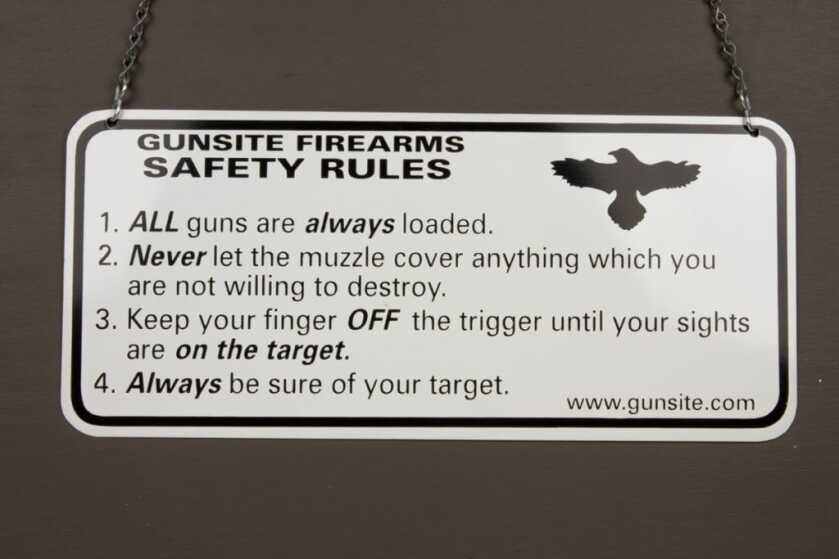
I did not make them up. They are used every day at what is known as Gunsite Academy near Paulden, Arizona. It is the world’s premier gun fighting school. Although they are straight forward, it can help to expand on them a bit. These rules should be followed religiously to help prevent unintended damage or injury.
Some people call a shot fired when it was not intended to be fired an “accidental” discharge (AD). Almost always, when someone utters that phrase, someone else smugly pipes up and insists that there are no “accidental” discharges and that all discharges of that type are the result of negligence. In other words, whenever a gun goes off when the handler does not intend it to, it is the handler’s fault because the trigger must have been pulled or the gun would not have fired.
To avoid the controversy over accidental and negligent, we will call them “unintentional” discharges (UD). This recognizes that whatever the cause of the gun firing, the person handling the gun did not intend it to fire. It also covers the highly unlikely event of the gun firing because of a mechanical or design failure which is not the fault of the person handling the gun.
Not every UD is going to cause death, injury, or serious property damage. The gun can launch a bullet that hits nothing important. When a UD occurs and there is no injury or property damage, the result is embarrassment and usually nothing more. But if the gun handler neglects to follow the rules and the gun fires, death, injury, or property damage can happen.
Many ranges have a long list of safety rules. Some are specific to the particular range, like not drawing from a holster or not using ammunition of a certain type. Those rules need to be followed if you are using that range, but when one analyzes the various range rules down to the basics, it is obvious that many are there to reinforce the four basic rules.

Back to rule 1. All guns are always loaded. Some people like to change this rule to, “Treat every gun as if it were loaded.” However, even if the gun is not loaded and you have checked to verify that, the handler should still consider the gun to be loaded. That’s because just treating it as loaded instead of believing it is loaded can be a dangerous mindset. It introduces into a person’s thinking the thought that the gun might not be loaded and that it is, therefore, okay to ignore the other safety rules. That can be very dangerous because the handler could easily be wrong and the gun actually has a round in the chamber. Consider that nearly every time someone is shot unintentionally, the gun handler says, “I thought it was unloaded”.
So, always check to make sure a gun is unloaded, sometimes called cleared, whenever you touch it. Do so even if you watched someone clear it seconds ago before handing it to you. Make it a habit to check whenever picking up a gun. Doing so indicates to others that you have a certain basic level of gun knowledge.
Humans can have a lapse in concentration and go through the motions of checking while not really completing the process. To reduce the chance of this happening, not only look to make sure the chamber is empty, but also feel for a round in the chamber. Make it a deliberate part of the checking process because that helps to prevent the process from becoming routine.
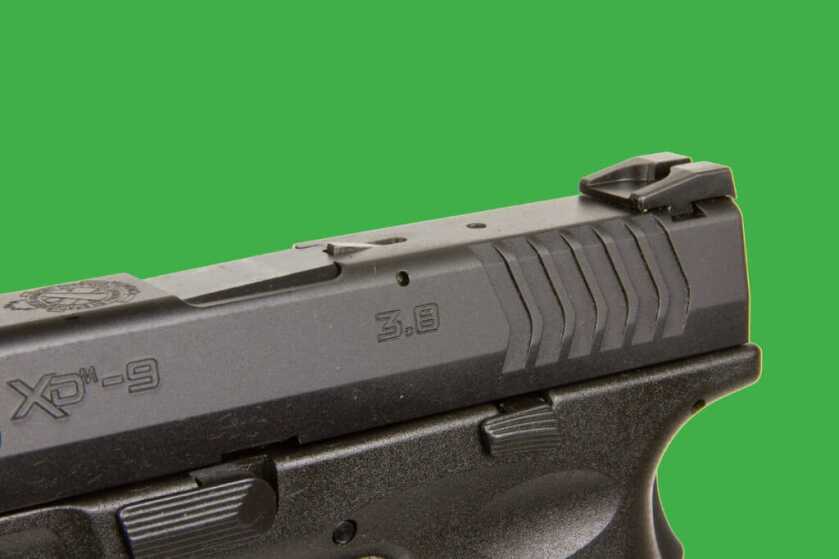
Pay attention to what you are doing, because even though a person has checked and rechecked to make sure a gun is unloaded, the gun still might be loaded. That’s because a person’s mind can trick them into seeing what they expect to see and not what is really there. For example, a very well known firearms instructor recently experienced a UD, but no one was hurt. Other instructors assisting with the class even looked at the revolver and declared it unloaded, but there was still a round in the cylinder. Everyone “saw” what they expected to see, and did not see that the gun was still loaded. Then when the instructor demonstrated a trigger pull, the gun discharged. Fortunately, he was following the other three safety rules and there were no injuries or property damage.

Many people have been shot when cleaning a gun. So when cleaning, keep your hands and fingers away from the muzzle and don’t point the gun at any part of your body. And, for those guns that require the trigger to be pulled before the gun can be disassembled, clear the gun and point the muzzle in a safe direction when pulling the trigger.
Rule 2. Never let the muzzle cover anything which you are not willing to destroy. Some new shooters do not know gun terminology, so when instructing a new shooter, use language easily understood by a novice and explain the terms to them. Don’t assume that everyone knows what you are talking about. For example, the muzzle is the front of the barrel where the bullet exits and covering means to point the muzzle at something.
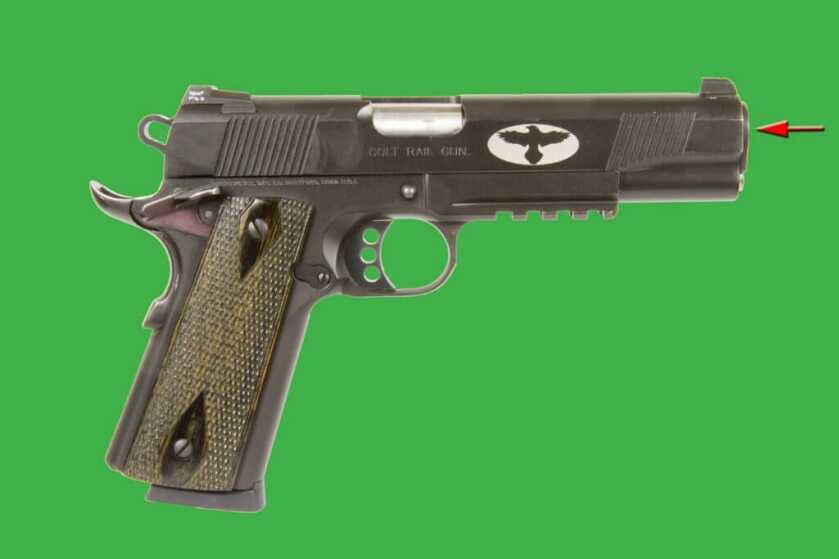
When considering where the muzzle is pointed, it sometimes helps to think of it as a laser that projects many miles. Anything that is in the line of the laser could be hit if the gun discharges. So don’t just look for people or objects that are within a few feet of the muzzle. Bullets can travel a long way. And up in the air is not a safe direction. Bullets that go up eventually come down and can kill or injure. They can also cause property damage. You must be certain where the bullet is going to come to rest.
Bullets not only travel very far, but they can also penetrate and go through things. The typical wall or door will not stop most bullets, whether from a pistol or rifle. So remember that someone or something you don’t want to shoot might be on the other side of that wall or door.
Bullets can penetrate roofs and, as mentioned earlier, must come down somewhere. So don’t point the gun at the roof and pull the trigger. Bullets can also penetrate floors. If you have to pull the trigger to disassemble a gun, make sure the gun is not loaded then point the gun at something you are sure will stop the bullet and that you are willing to damage if the gun fires.
Getting a bullet trap is not a bad idea. If you have a good one, it will safely stop any bullet within its design parameters. And everyone who shoots enough eventually has an unintentional discharge. If the muzzle is in the bullet trap and the gun fires, it won’t damage anything except maybe your nerves or pride.
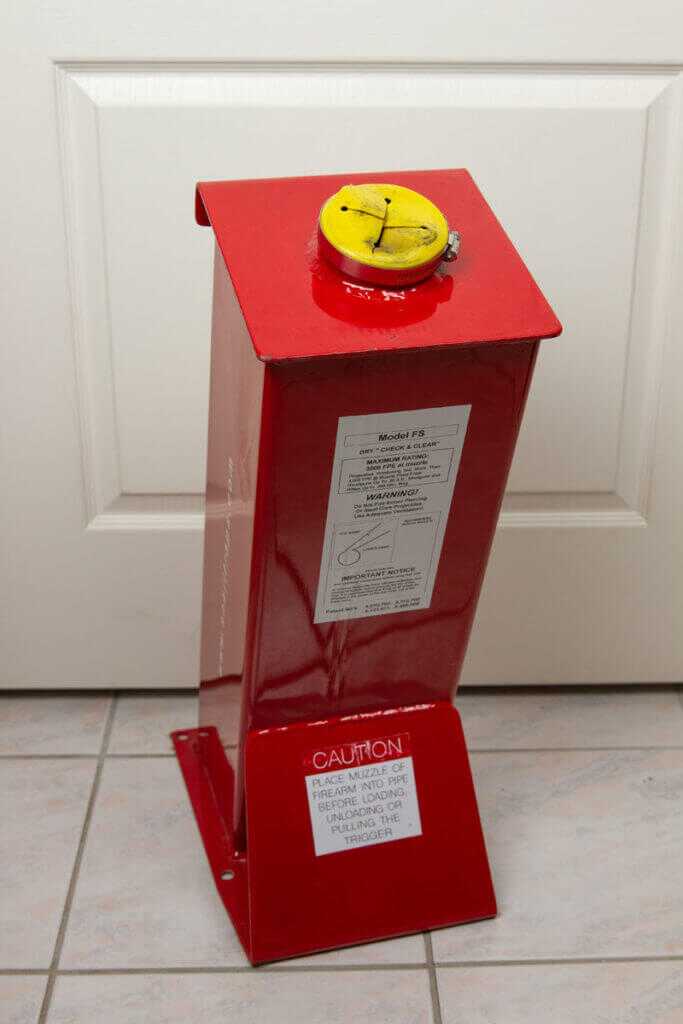
Rule 3. Keep your finger off the trigger until your sights are on the target. Guns rarely go off unless the trigger is pulled. But any gun can discharge if a mechanical part fails. So don’t rely on safeties, or assume that just keeping your finger away from the trigger will prevent the gun from firing, even though a properly maintained gun is usually safe. And if the trigger pull has been altered, especially if the job was done by someone who is not competent, the gun might fire without the trigger being pulled.
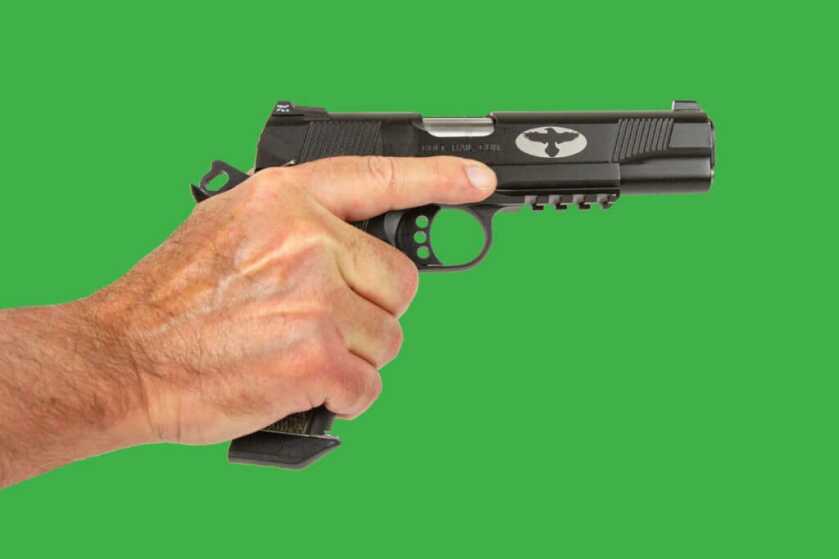
A dead give-away that a person is an amateur, is picking up a gun and automatically placing the finger inside the trigger guard. A person who does that needs training badly. Putting the finger on the trigger before the sights are on target and the handler has decided to shoot is dangerous, because the trigger can be pulled even if the handler does not consciously press it. The handler’s finger can contract reflexively and pull the trigger if the other hand clenches or if the person is startled, falls, or stumbles. There are videos that prove it. Just do an internet search and you’ll find many. In fact, I’ve seen a cop point a gun at the ground with her finger on the trigger, then when she keyed the microphone on her radio with her other hand, the gun fired.
Rule 4. Always be sure of your target. Know for sure what you are shooting. And don’t shoot unless you are sure the person or target should be shot. That shadowy figure of a person inside your home may be your spouse, son or daughter, or even a neighbor who went into the wrong house. You don’t want to live with the memory of shooting someone like that. And it has happened – many times – so know who or what it is that you are shooting.
If you can’t positively identify the target, don’t shoot. And be sure of what is between you and the target. Also know what is behind and beyond the target, because bullets sometimes go through targets and destroy or injure whatever is behind. Or you may miss the target and hit someone or something you don’t want to shoot. So be careful and get the training and practice needed to shoot accurately.
Safety is a very serious business and those who are acting unsafely with a firearm endanger lives and property. It’s your decision about correcting them or just leaving the area. If you correct them, do it politely and firmly. If the unsafe behavior continues, just leave the area. You might consider reporting the behavior, especially if there are other people around who might be in danger, but exposing yourself to that danger just to shoot your gun is not worth it.
Everyone who shoots enough eventually has a UD. For an experienced shooter, it is usually the result of a mental lapse like thinking of something else when checking the condition of a gun. So follow the safety rules as if your life depended on it – it just might – and hopefully, nothing bad will happen when you have that UD – besides being embarrassed.

I preach the col’s 4 to any who i bring into our lifestyle! Im convinced the are a big reason we have greatly reduced negligent rounds harming people.this and so much of the other wisdom cooper gave us ill pass on to as many as i can.follow the 4 always and enjoy in safety!
Agree to disagree with Rule #1. “Treat every firearm as if was loaded” does not say to disregard any other rules. “All firearms are always loaded” means the same thing, but is not factual and requires a tiered belief system. Someone’s lack of following the rules doesn’t change the rule. Of course, at the heart of it, it is the same rule.
As an instructor, I prefer to give people something to do instead of something not to do. With rule #2 “Always keep the muzzle pointed in a safe direction” give students the same rule but they are looking for a safe direction to point the firearm at all times, not gazing around thinking “Nope, don’t want to destroy that…nor that…nor that.”
Rule #3. “Keep your finger off the trigger and outside the trigger guard until you have sights on target and you have made a conscious decision to fire.” No exceptions. With all of the article rules posted, you may still have an UD. Though will be in a safe direction. Maybe this “conscious decision” is implied, but students seem to not many conscious decisions when they first start shooting or have very bad training scars.
I agree with a previous poster (Chris Mallory) Rule #4…one should know their target and what is beyond/behind.
Very nice article. It is good that this one comes around about once a year and now especially when there are many brand new firearm owners out there. Thanks!
Great Article. Nothing needs to be changed. The rules should never be changed they have worked for a long time and will always work. If people don’t understand them that is the person’s intelligence that is lacking. Modernizing the rules give me a break. Well done.
#4 is incomplete. You need to be sure of your target AND what is behind it. You are personally responsible for every bullet until it stops.
I guess if you want to simplify it,4 KNOW WHERE YOUR METAL STOPS!
#4 does need the following phrase added “and what is behind/down range of your target.”
If you have innocents behind your target, take cover or move to where you have a shot that will not endanger others.
Gunsite symbol looks identical to Nazi
Eagle may be something else but nowadays
This will get you in big trouble
Jeff Cooper had a thing for the Nazis. I heard a first hand witness account from a man I met at the NRA convention in Seattle (I think it was 1985) who saw Jeff Cooper show up at some sort of shooting club in South Africa dressed as an SS Lieutenant. From what I was told, he barely escaped the enraged reaction. Take it for what it is worth . . . to some, not much, to others, a bit more. YMMV
Only with people who think like real NAZIs.
Ok, lets get this straight, it’s a RAVEN, NOT an Eagle.
It was a sacred symbol to the Navajo, NOT the friggin’ Nazi’s!
From one perspective, nearly ALL birds ‘look alike’, but they are not.
Sounds a lot like Marine Corps firing week range safety rules.
Rifle Range Safety Rules
The four rifle range safety rules are:
Treat every weapon as if it were loaded.
Keep your finger straight and off the trigger until you intend to fire.
Never point your weapon at anything you don’t intend to shoot.
Keep your weapon on safe until you intend to fire.
Above information found on the Parris Island web site, September, 2009.
Safety is the most important aspect of handling firearms. In order to have the most people understand safety, the safety rules must be clear. Without negative connotation for Guniste and its beloved founder, Col. Cooper, the 4 rules arguably can and should be modernized/clarified. E.g.:
1. “Guns are always loaded.” If true, how can I ever clean my gun? You don’t want me to clean a loaded gun, do you? I don’t want my gun to always be loaded because that is not safe. Etc., etc. Better — “Treat guns as if they are loaded until you have safely unloaded them and checked 3 times both visually and with your finger to be sure they are unloaded.”
2. “Never let the muzzle cover …”. Instead, why not, “Never point the gun at …”. There are peole who thing never let the muzzle cover means only that the muzzle is touching something and literally physically covering it.
3. Add at the end, “and you are absolutely sure you want to shoot that target”.
4. Replace it with, “Always be sure that you see the target and are sure you want to shoot it.”
Words are critical. Let’s make sure our words for gun safety are clear, complete and understandable by the most people possible.